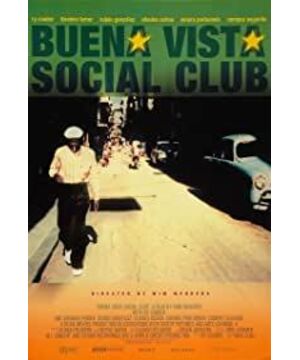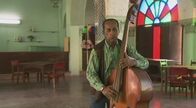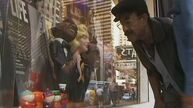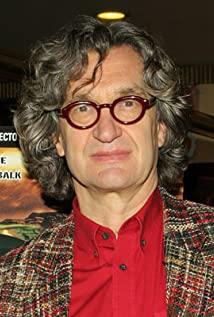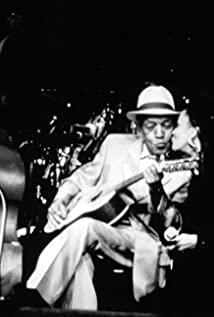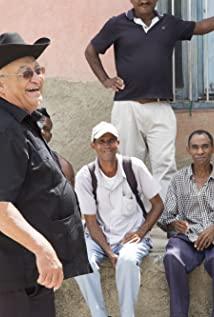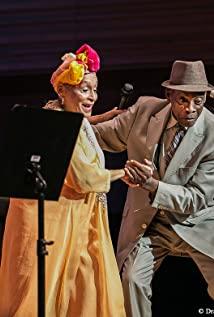- How Pina Bausch
captures and defines a woman sexy? Sensual sexiness is something that is easy to be reduced and materialized, and memory gives you a symbol lazily: Monroe's mole, Hepburn's thick eyebrows, Scarlett Johansson's lips, Beyonce's "electric motor" ...they themselves are like flowing art galleries, their body spaces filled with conceptual installations and objects. Another kind of sexiness is created by the mind, Duras feels that "she doesn't need to be sexy because she is a writer" - this sentence itself is very sexy; Beauvoir incites the "second sex" of the world to stand up and do it herself Sartre's little woman—the act itself is sexy; Sontag disenchanted for photography, said Campley, sieged for form—the intellectual vision itself is sexy. Extreme women are either objectified or deified. Thankfully there is a third kind of sensuality, between motion and stillness, creation and expression, thought and action—the complicity of intelligence and desire. As for women with the third category of sexy, they cannot be reduced, and they refuse to be completely metaphysical. Their works convey aura, their aura outlines their personalities, and their legends are more difficult to be developed by language. Pina Bausch should belong to the third category of sexy women.
I vaguely remember the grand occasion when Pina Bausch came to China to perform in 2007. The Tianqiao Theater in early autumn only performed for four days, with two works. The first half was "Café Mueller" and the second half was "The Rite of Spring". Essence. The people waiting for refunds and scalpers outside the door were anxious and eager, and the audience who were fortunate enough to watch inside the venue were crazy and intoxicated. But this is Pina Bausch's first and last performance in China. On June 30, 2009, 69-year-old Pina died suddenly five days after being diagnosed with lung cancer. Her departure was so dramatic that even the dancers at the Upata Dance Theater, who had ended the curtain with her a few days ago, were in a trance. Before her death, she was negotiating to perform in China again in 2010. She also planned to cooperate with her countryman Wim Wenders on a 3D movie - "Pina". 3D movies are high-investment and large-scale production, and a new benchmark for art movies with forward-looking experiments. And all these expectations turned into regrets because of Pina's death.
Pina Bausch was born in Solingen, Germany in 1940. She started dancing at the age of 15 and entered the Fuer dance studio at the age of 15, helmed by Kurt Yuss, one of the most influential choreographers at the time and one of the initiators of German expressionist dance. Kwan School to study. After graduating in 1960, she won a scholarship from the Juilliard School of Music in New York with honors and came to this palace-level art academy to continue her studies. In New York she was a dancer with the Paul Sanasardo and Donya Feuer Dance Company and the New American Ballet, and was a member of the Metropolitan Opera Ballet.
And Pina's real rise came after she returned to her hometown to join the new Fulkwang Ballet, founded by old principal Kurt Yuss, as a soloist. In 1968 she composed her first dance piece, Fragment, and in 1969 she succeeded Kurt as the company's artistic director. In 1972, Pina became the artistic director of the Uppata Ballet, which she later renamed the "Uppata Dance Theater".
Upata, a small town in the river valley of North Rhine, Germany, before the 1970s, Europeans came here to experience the cable car hanging in the air; after the 1970s, it was because of Pina and "Dance Theater" And internationally renowned, it has become another pivotal "pilgrimage place" in the world art circle. Wuppertal, Wuppertal, read it, felt the relationship between rhythm, rhythm, breath, lips and tongue, and seemed to think that it should have some kind of mysterious connection and connection with Pina's dance. Maybe it was just some kind of post-hypothetical fake climax, and narcissistic pseudo-poetry, but the name has been forever linked to Pina's life ever since. With her personal dedication to art, Pina transformed Upata into the birthplace of "dance theater": using different forms of art such as pantomime, gymnastics, and drama, supplemented by diverse music, such as opera, music, monologue, Give dance a new vocabulary. Up to now, Pina's "Dance Theater", American postmodern dance and Japan's Butoh are called the three major contemporary new dance genres.
Think with your body. This is the biggest difference between Pina's dance and American modern dance. Everything in the latter starts with action. It explores how to break the shackles of reason on the body, let action dominate the body, and return to the original instinct. This is the fruit of Western anti-intellectual thought in art. It seeks the HOW of the body, which is the body. Ruling the whims of the mind. Pina, who was educated at the Juilliard School of Music in New York, also experienced the confusion of intellectual and physical competition, as she said: "Before, because of fear and panic, I thought that the problem started with the action, but now I start directly with the problem. "Perhaps the relationship between the body and the intellect is not about who overpowers the other. Traditional modern dance sharpens the opposition between the two, and what Pina wants to explore is the fusion of the two, the conspiracy of intelligence and desire. Pina starts each piece with a central question, asking all dancers questions related to life, inner needs in the early stages of the piece's formation: wishes, childhood, love, what to eat at home for Christmas, animals falling into What would she say when she was trapped, what was she thinking when she got rid of it... What she was looking for was the WHY that existed in this world. Maybe the answer was not important. Sisyphus-like questioning and thinking over and over again was the place of the Tao. A mess of questions and answers gradually guides the dancer into the inner world, looking for the answer to life, internalizing it into material and strength, and then faithfully conveying the voice of the heart through body language. The intellect is the beginning of action, and the body answers the question of desire. Dance theatre examines human behavior and human nature with a real eye. This is an attitude without prejudice. It only focuses on what people "are" who exist in the world, not what they "should be." "The moral standards or ideals that anyone should pursue" are just preaching. People can only truly experience life in the process of continuous attempts and misunderstandings in pursuit of happiness. Dance theater is a condensed interpretation of the human world, because only by expressing it in such a persistent way can the audience have a longing for luck and love, the "basic" desire of human beings.
What Pina has been experimenting with is a new theater form that allows the audience to actively participate. In her opinion, the most important participation is thinking. Honesty gave her the courage to face her fears. What she devoted her whole life to was using dance to fight her fears.
Related recommended
dance: "Carnation" (Nelken) 1982
Compared with "Müller's Cafe" and "The Rite of Spring", "Carnation" is a story about the struggle of human growth and love. The story begins with a flower field made up of thousands of pink carnations on the stage, each blooming flower seems to be telling the joy of heaven. The dancers entered the stage with chairs one after another, arranging the chairs in a horseshoe shape. The elegant opera created a pleasant atmosphere, the music ended, and the dancers sat safely, whispering and exchanging sweet words of love. Afterwards, a dancer interprets "My Beloved" with body language, and the song leads the image of wedding blessings, and the dream of building an eternal love nest reverberates around the beam. Time, looking for lost innocence in paradise garden. Immediately afterwards, dancers line up in a relay way to start telling stories, which may be childhood dreams, parental admonitions, or the history of family mementos. They are eager to share their love for each other, but love is a complex emotion. The play then uses a lot of repetitive and violent body language to express the tenderness that the dancers long for deep in their hearts. They trample carnations with props. Running wildly, like the people traveling through the streets, the flying outer dance skills and inner imagination meet at the crossroads of the stage. In the end, the lights went out, and I saw the carnation petals left on the stage. It was the only witness, and only it knew the childlike innocence and the battle of love that it once had.
Film: Hable con ella 2002
Almodóvar’s 2002 film was directly inspired by Pina’s 1998 film for the Lisbon World’s Fair called Passionate Mazurka. dance. When Almodovar watched "Passionate Mazurka" in Barcelona, he was shocked by the idyllic peace in the dance, especially the performance of female dancer Ruth Amarante: she thought she would start singing with a microphone in her hand, but she didn't He was silent, took a deep breath, and then let out a deep sigh, which made the thoughtful film master burst into tears on the spot. So deeply moved Almodovar paid tribute to the contemporary choreographer by appropriating two of Pina Bausch's dances at the beginning and end of the film.
(Pina Bausch also played a blind princess in Fellini's 1983 film "The Ship Goes On," an earlier electrocution. The dance 3D movie "Pina", which was planned to be filmed in September 2009, has become a permanent regret because of Pina's sudden death.)
Sculpture:
Giacometti Pina Bausch once said: "Look at the Pedestrians are more important than watching a dance." Anyone who learns to dance knows that the most difficult movement is walking, because walking is the most realistic. And when this "reality" is placed in the dance space, music and silent spatial scheduling are brought into the theater, and the material speed and definition of the theater in the past are broken, and time is infinitely stretched, just like Giacometti's solid foundation The slender pedestrians on the seats are full of uncertainty and poetry under the modern sense. No matter from the perspective of form or conceptual core, if you want to find the "correspondence" of Pina dance in other fields of art, it is Giacometti's sculpture. At that time, the expression of the theme of walking, which was isolated and sometimes rubbed shoulders, the surreal sense of volume reflected in the space, the artistic reflection of "existentialism is a kind of humanism"... a movement and a stillness, which complement each other interestingly.
Originally published in "Fengshangzhi", please indicate the source for reprinting.
View more about Buena Vista Social Club reviews


